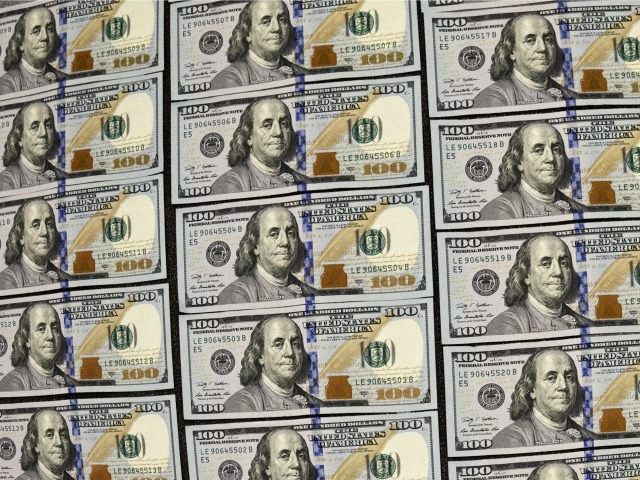There is plenty of room to debate the benefits of the U.S. Federal Reserve’s monetary policy. But Senators Elizabeth Warren (MA-D) and David Vitter (LA-R)’s bipartisan bill, the “Bailout Prevention Act of 2015,” would further restrict the Fed’s emergency lender-of-last-resort ability in a crisis. The bipartisan bill may make perfect bureaucratic sense, but it would make the next financial panic much more intense.
During the 2007 through 2009 Great Financial Crisis (GFC), the Fed used its emergency lending authority to make lender-of-last-resort loans to prevent the collapse of Bear Stearns and AIG. The Fed’s actions, with the full support of the Treasury Department and Congress, prevented the disorderly implosion of two “systematically” large, complex, and highly interconnected firms.
Former Chair Ben Bernanke has argued that if the Fed had not taken such actions, the U.S. would have suffered two additional financial panics, similar to the aftermath of the September 2008 Lehman Brothers bankruptcy. According to FDIC Chairman Martin Gruenberg, the disorderly bankruptcy of Lehman Brothers
triggered the worst financial crisis since the Depression and contributed to the most severe recession since World War II. More than 8 million people lost jobs, more than 9 million homes went into foreclosure, GDP declined more than 4 percent, and virtually the entire net income of the banking industry for two years was wiped out despite unprecedented government intervention in support of the industry.
During the GFC, the Fed as lender-of-last-resort created a slew of broad-based lending programs to unfreeze what was politely called “dysfunctional markets,” (aka panic), with the goal of stemming the runs on banks and brokers that threatened to implode the financial system. All the fully-collateralized Fed loans were later paid back with interest.
The Fed had to stabilize Bear and AIG because Congress purposely avoided granting any legal bankruptcy mechanism to safely wind down a “systemically important” financial firm on the brink of collapse. One of the only positives of the 2010 Dodd-Frank financial reform bill was providing an orderly mechanism for the Federal Deposit Insurance Corporation and the Fed to put the firms in receivership, before liquidation.
Bernanke recently stated, “As Fed Chairman, I was delighted to see my institution taken out of the business of bailing out failing behemoths.”
Dodd-Frank increased the bank, insurance company and broker disclosure and reporting requirements, while cutting back FDIC and Treasury emergency powers. But it did preserve the Fed’s lender-of-last-resort authority, subject to permission from the Treasury Secretary, to make massive temporary loans during a financial panic.
Carmen Reinhart and Kenneth Rogoff’s This Time Is Different: Eight Centuries of Financial Folly, published just after the Global Financial Crisis, reveals that rich and poor countries for the last 800 years have been lending, borrowing, crashing–and recovering–their way through an extraordinary range of financial crises. Each time, the experts have chimed, “this time is different”–claiming that the old rules of valuation no longer apply and that the new situation bears little similarity to past disasters.” The U.S. has suffered at least 16 financial crises.
Walter Bagehot, in his classic 1873 finance and banking tome, Lombard Street: A Description of the Money Market, coined “Bagehot’s Dictum“–that “in times of financial crisis central banks should lend freely to solvent depository institutions, only against good collateral and at interest rates that are high enough to dissuade those borrowers that are not genuinely in need.”
The Federal Reserve is the third central bank of the United States. Congress learned the hard way after twice pulling support for a semi-independent central bank and returning the power to the Treasury Departments under U.S. Presidents who tended to politicize finance and monetary policy. The Fed was founded in 1913 after a financial crisis to be a lender-of-last-resort to ease panics and reduce bank runs.
The Warren-Vitter bill requires the Fed and the supervisors of any company receiving lender-of-last-resort loans to certify the firm’s solvency and make the analysis immediately public. Bureaucratically, this seems to make perfect sense. But real-world financial panics develop quickly due to some triggering event metastasizing from fear into dread panic and confusion. It took 3 former judges until April 2014 to rule that Lehman’s management, not Ernst & Young, were responsible for Lehman’s accounting gimmick of temporarily moving tens of billions of dollars in debt off its balance sheet at the end of each quarter to make Lehman brothers look more solvent.
The Warren-Vitter bill also requires the interest rate on any emergency lender-of-last-resort loans be set at least 5 percentage points above the “Treasury rate.” This also makes bureaucratic sense, but banks operate at interest rate spreads of about +1.5 percent. Making the Fed a “white knuckle lender” means the “rescued” financial institution would be paying an interest rate that guarantees its insolvency. Such a move would cause all other creditors to panic and demand immediate payment.
There is plenty about the Fed’s quantitative easing and other post-crisis monetary policies that needs a bipartisan effort to reign in. But the Warren and Vitter bill would drastically curtail the Fed’s lender-of-last-resorts power. Such action has bureaucratic credibility, but it also would ensure the next financial panic has a high probability of turning into a financial collapse.

COMMENTS
Please let us know if you're having issues with commenting.